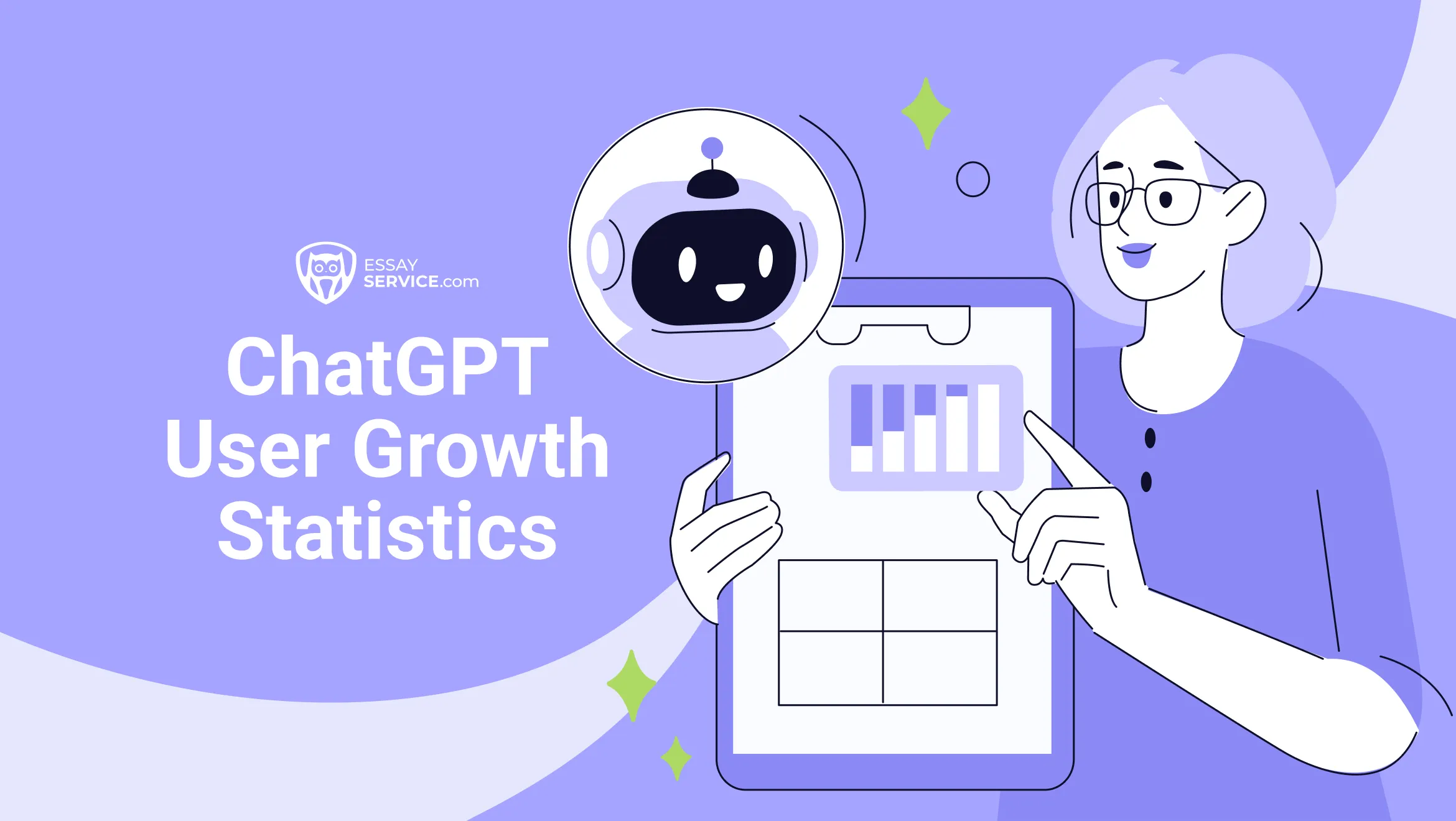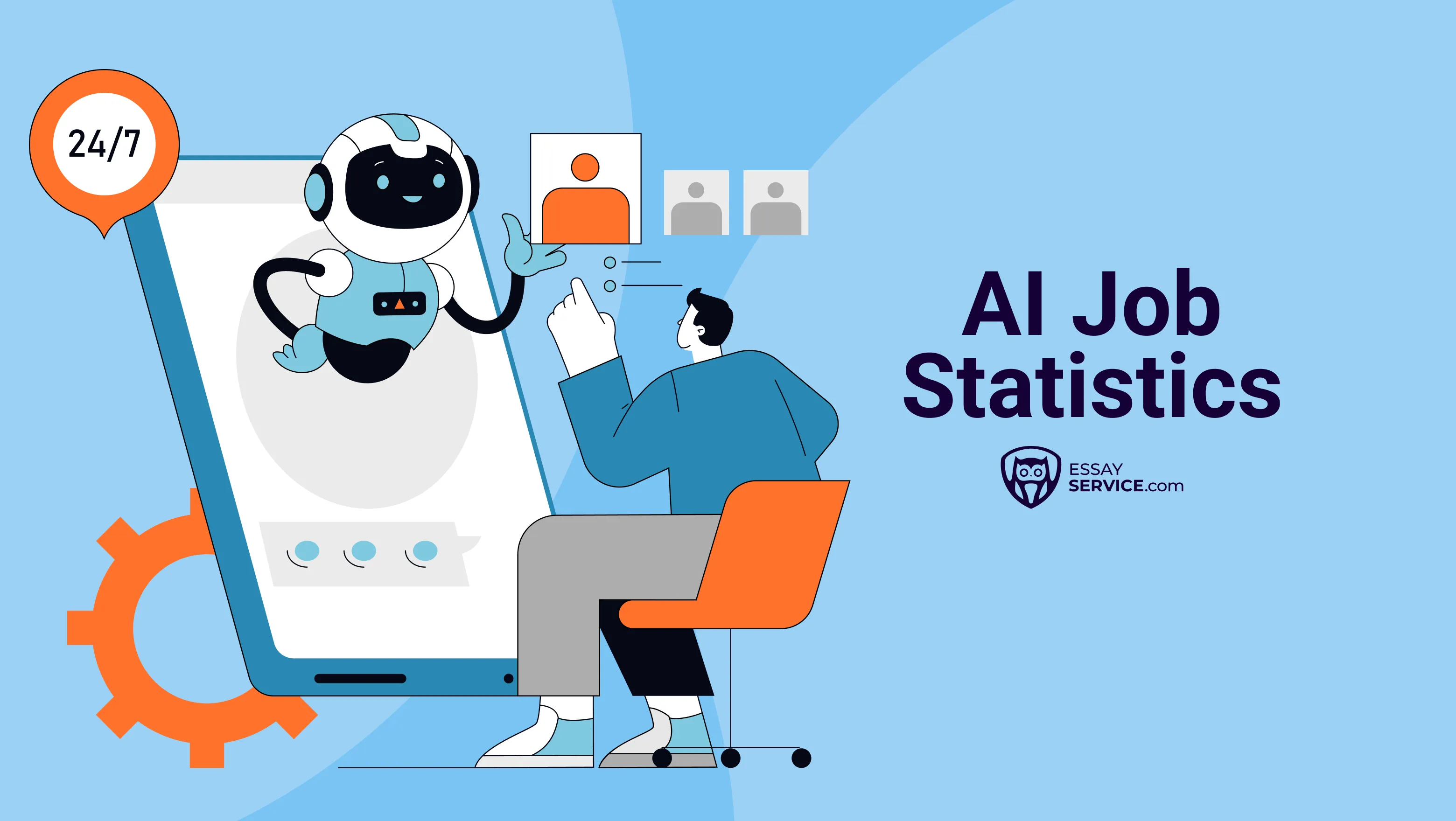Key Takeaways
- ChatGPT now handles around 2.5 billion prompts every day and attracts about 4.6 billion visits each month.
- With more than 81% market share, it dominates the generative AI field and ranks sixth among all global websites.
- Nearly half of all users are under 25. Female usage keeps rising, too, showing how balanced the user engagement has become.
- The United States leads global traffic at 17%
- About 83% of users rely on ChatGPT for personal work, while 71% use it professionally for writing and research.
- By 2026, the user base may pass four billion monthly active users.
From a few curious users to billions of interactions every day, ChatGPT's rise has been faster than almost any technology in recent history. The platform now handles about 2.5 billion prompts daily. The number itself explains why these statistics have become a global talking point.
In this article, we’ll look at ChatGPT user growth statistics and how they reflect changes in how people learn and write. Students use these tools for essay drafting, but there's nothing like human help when you revise. Our essay writing service helps them express opinions while still meeting all academic standards.

ChatGPT Usage Statistics: Main Data
AI has entered everyday routines faster than any other platform. Here is the clearest ChatGPT usage data:
- ChatGPT.com receives about 4.61 billion visits each month.
- Roughly 62% of its social media traffic comes through YouTube.
- The U.S. accounts for about 14–15% of global visits in some data sets.
- ChatGPT holds a dominant share (around 75-80%) of the generative-AI chatbot market.
- Nearly 45% of users are under age 25, indicating strong adoption among younger adults.
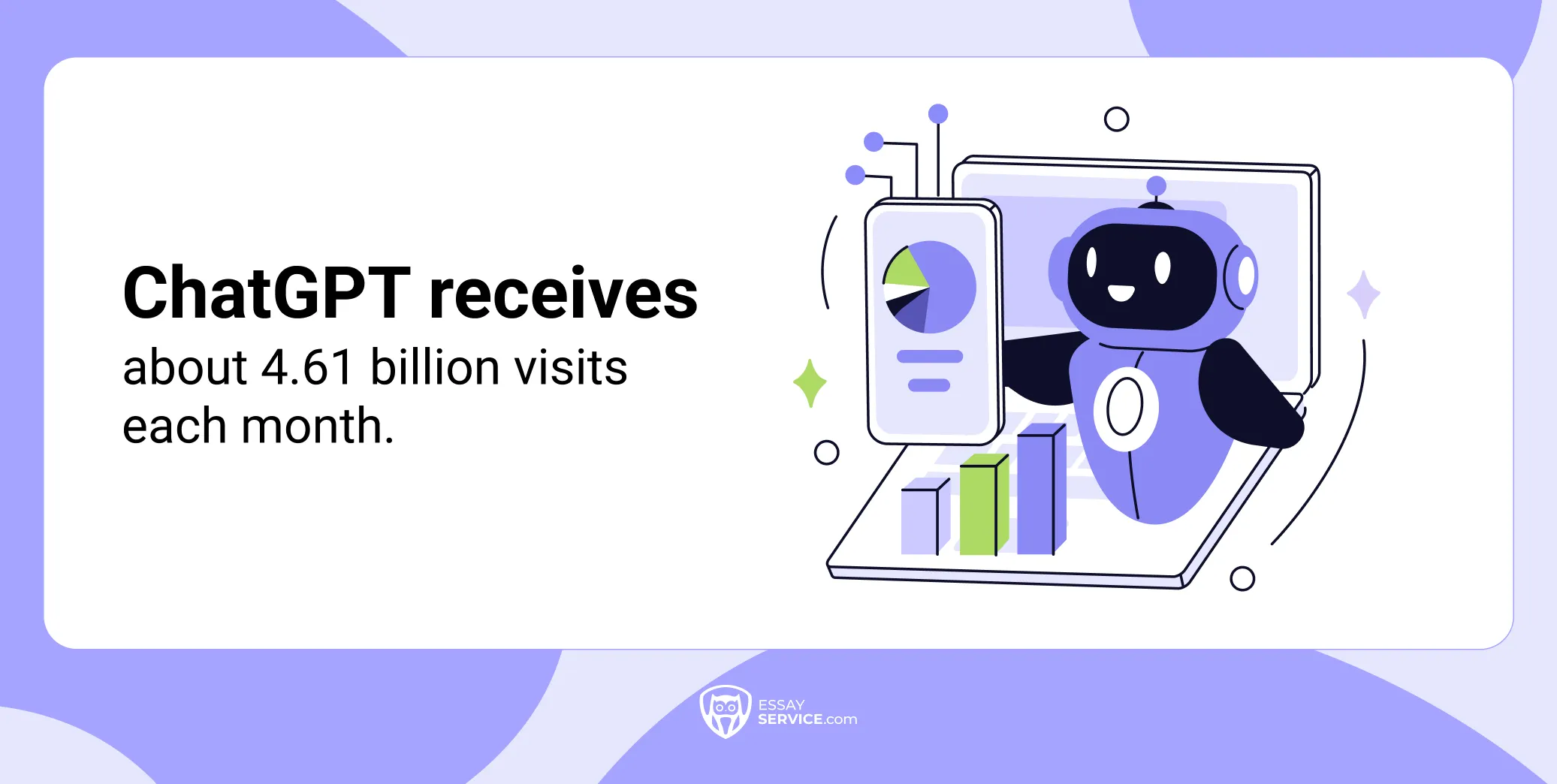
Each figure points to a global shift. ChatGPT user growth reflects how artificial intelligence growth statistics are no longer abstract concepts. It now describes real patterns of behavior and communication that shape each aspect of our lives.
ChatGPT Active Users by Demographic
The largest part of ChatGPT number of users is a younger audience. Students and young adults, mostly. But let's break down the numbers so we get a clearer picture.
Gender
- About 64.32% of ChatGPT users are male.
- Around 35.68% of ChatGPT users identify as female.
Usage among women is growing, though. In January 2024, about 37% of ChatGPT users had names that could be considered feminine. By July 2025, that figure passed 50%. Of course, measuring by names is based on patterns, not verified data about gender, so it should be read as a rough indicator only.
Age
- More than 45% of ChatGPT users are under 25.
- Around 25% are between 25 and 34.
- Roughly 10% are aged 35–44.
- Another 10% fall in the 45–54 group.
- Users aged 55 and older represent only a small share of the total base.
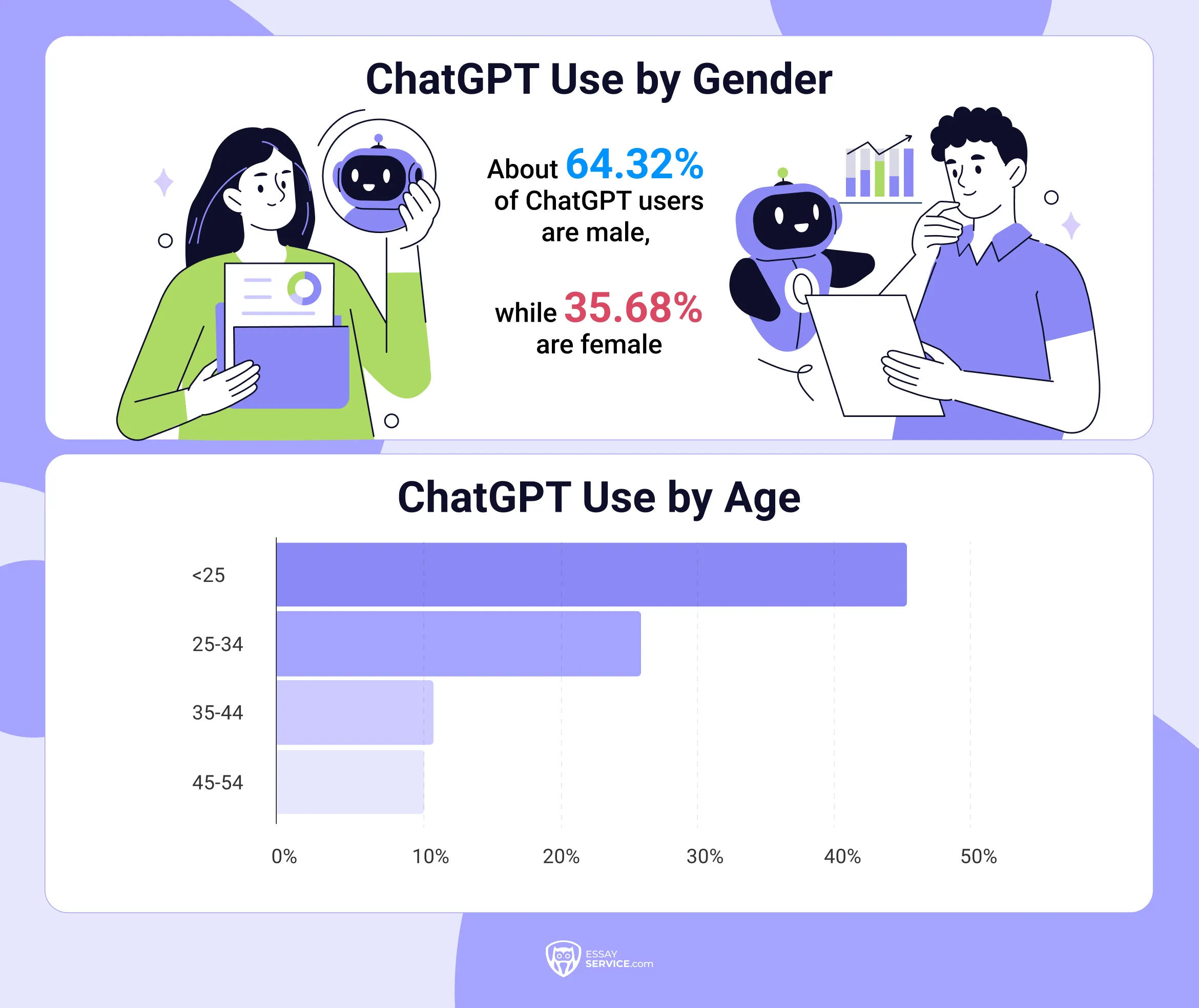
ChatGPT feels more natural to younger audiences, which can be proven by the fact that nearly half of users are under 25. Those in their mid-twenties to early thirties use it to manage school and even work tasks. Older ChatGPT users, though fewer, are joining for other practical reasons like research or communication. Gender balance is also shifting. The number of ChatGPT female users grew from roughly one-third to over half.
Which Countries Use ChatGPT the Most?
A significant portion of the world's adult population uses ChatGPT. A few countries, though, lead the statistics by clear margins. The highest user number, 17%, comes from the United States. That's an estimated 77.2 million monthly active users. India follows with roughly 8%. Brazil contributes close to 6%, while Japan reaches about 4%. This data reflects fast digital expansion in their regions. Germany holds around 3% and leads Europe in overall adoption.
Different cultural and regulatory details influence ChatGPT's user base:
- China's national restrictions block access to most foreign AI tools.
- Privacy laws and slow regulatory approvals in the European Union limit developer experimentation.
- The United States benefits from broad internet access and open software availability.
- India's growth comes from strong English fluency and a large base of tech users.
Note: All figures are approximate. Different analytics sources report slightly different numbers depending on methodology and date.
ChatGPT Usage in Daily Life and Work
ChatGPT adoption rate spans both personal and professional contexts. Estimates suggest a majority of users, around 70%, employ ChatGPT for personal tasks. Many use it to study, plan essays, or write short texts for social media. Another 71% turn to it during work hours. They use it for writing emails, organizing reports, and shaping marketing drafts. In the United States, one in five adults now includes ChatGPT in their professional routine.
The classroom is another strong front. A 2024 survey found 26% of American teens used ChatGPT for schoolwork, up from 13% the prior year. The rise clearly shows that this AI essay writer is becoming part of research and drafting habits. Within marketing and communication teams, 57% use AI for writing and editing. They see it as a way to simplify early writing tasks before refining them by hand.
Patterns across education and workplaces align. ChatGPT now works as a writing companion, not a passing experiment. The current adoption rate shows users depend on it to save time, test ideas, and manage communication in a structured and familiar way.
ChatGPT Traffic Statistics
ChatGPT traffic numbers show just how fast the platform has expanded. In September 2024, visits stood near 3.1 billion. By October, the number climbed to 3.7 billion. This is a significant increase of almost 19% in a single month! The following period, through December, was consistent. September 2025 counted almost 5.8 billion visits, a 2 billion jump from January of the same year.
ChatGPT ranked sixth among all websites in the world by mid-2025, and it was the first in its industry category for programming. It also drew about 800 million weekly active users, which equals roughly 3.48 billion monthly active users (when activity levels remain steady across the month).
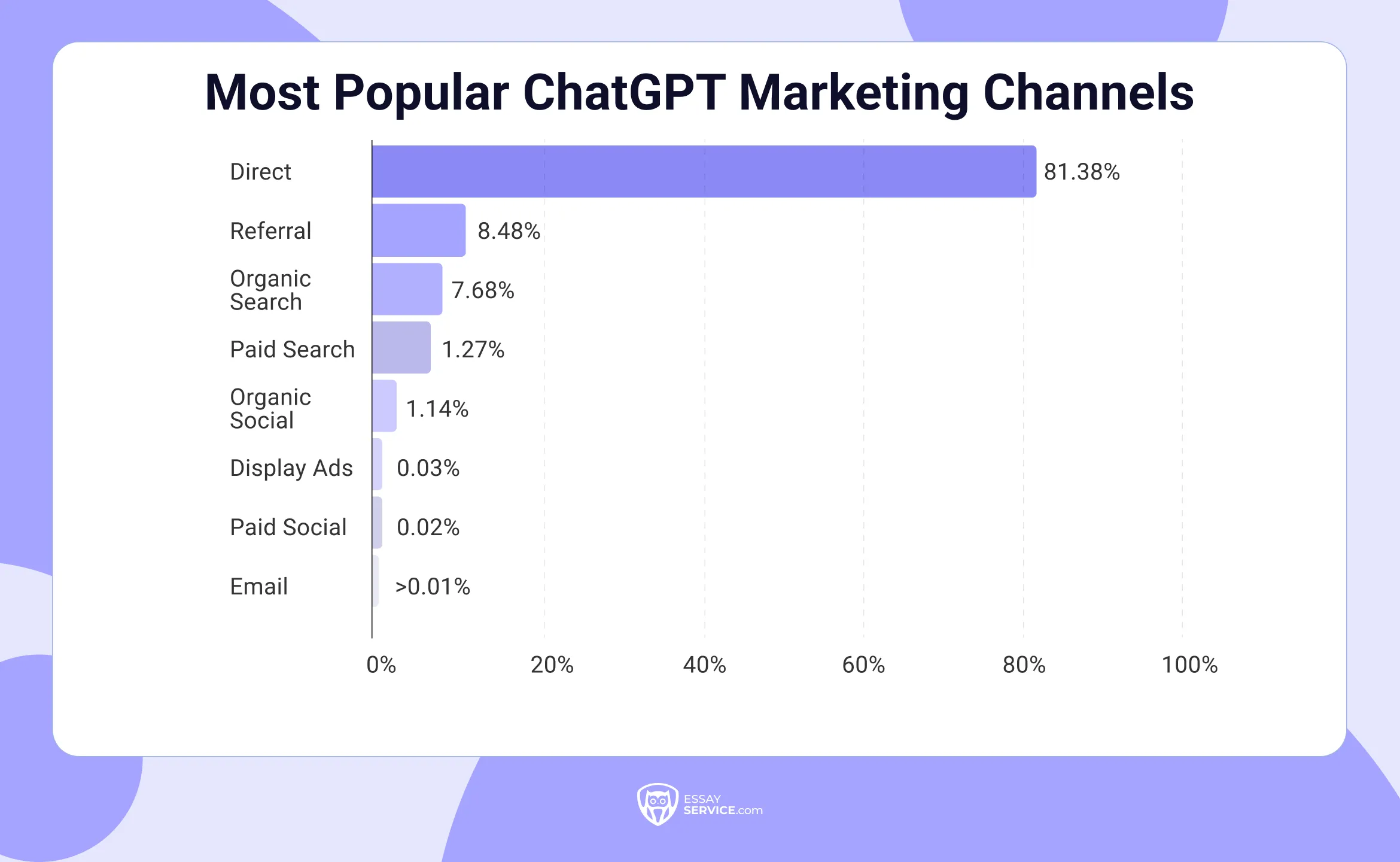
Desktop use remains high among professionals who rely on stable work setups. Mobile traffic keeps rising across younger audiences who access this tool for quick research and writing tasks. Together, these trends push the platform's global visibility higher. ChatGPT market share now rivals the largest names in digital communication and productivity.
Factors Influencing ChatGPT Growth Speed
ChatGPT’s growth happened fast because it reached people easily, stayed visible online, and became part of daily work and study routines. Each of these factors built momentum until using ChatGPT felt as common as checking email.
- Access: The free version removed barriers that stop most people from trying new tools. Users could start typing and get results within seconds. That ease of use turned first-time visitors into regular users.
- Visibility: Social media kept ChatGPT in the public eye. Viral videos showed students solving assignments, workers drafting reports, and creators writing scripts. Each post worked as unpaid advertising. People saw results and wanted to test them themselves.
- Integration: The model soon became part of the systems people already used. Microsoft 365 Copilot brought it into Word, Excel, and Outlook. Employees wrote faster. Teachers prepared lessons and feedback more efficiently. Students improved essays and notes. Content creators planned stories and posts with it.
Problems That Might Hinder ChatGPT Growth
The expansion also brings pressure. Sustaining accuracy remains one of the biggest challenges. The trust issues appear when ChatGPT users encounter inconsistent information. User base retention also depends on performance just as much as novelty. Regulatory pressure adds even more weight. The European Union's AI Act introduces detailed rules on transparency and data management, which require constant adaptation.
There are a lot of ethical questions left unresolved. For example, ChatGPT relies on text collections for training. The quality of the source is what determines the reliability of responses. Low-quality or biased data obviously leads to flawed results. Privacy and authorship are among other concerns that urge software developers to refine data handling. All in all, the success of ChatGPT now depends on how responsibly the platform manages accuracy and compliance.
The Next Chapter for ChatGPT
ChatGPT is entering a new stage focused on independence and precision. The upcoming versions aim to manage daily digital work with minimal guidance. Several major developments shape this direction:
- Super Assistant mode will organize calendars, emails, travel, and app integrations.
- Short-form video creation will use technology inspired by Sora AI.
- Expert modes will assist professionals in law, healthcare, and finance.
- Custom AI chips planned for 2026 will lower operational costs and speed up processing.
- GPT-5, expected in 2025, will offer stronger reasoning, longer memory, and improved personalization.
If growth continues, ChatGPT could reach more than four billion monthly active users. But the competitors haven't been sitting idly, either. For example, Claude AI puts emphasis on reasoning accuracy. Gemini prioritized search and multimodal data. Meta AI expanded through social media platforms and pushed OpenAI to take a second look at ChatGPT's performance.
The Final Word
The story of generative AI and specifically ChatGPT is one of constant development. The platform now records over five billion monthly visits and reaches a broader audience in every part of the world. Top ChatGPT statistics show that what initially began as an experiment turned into an integral part of our lives. Future releases promise that we'll integrate ChatGPT even deeper into our routines.
For students, this shift also brings responsibility. EssayService offers a space where human expertise meets technological progress. And if you still need some more convincing to trust our services, read our article on why AI essay writer by EssayService is a must have.
Frequently Asked Questions
How Many Users Did ChatGPT Gain?
ChatGPT grew from roughly three billion monthly visits in late 2024 to almost six billion by September 2025.
Is ChatGPT the Fastest Growing App of All Time?
Yes. ChatGPT reached 100 million users within two months of release. That was the fastest adoption rate ever measured for a public application.
How Many People Are Using ChatGPT in 2025?
Estimates suggest ChatGPT now handles over 5 billion monthly visits, with reports of around 800 million weekly active users. (Actual unique user counts aren’t publicly released.)
How Long Did It Take ChatGPT to Reach 100 Million Users?
The platform reached 100 million users in about eight weeks after launch.
Which Country Uses ChatGPT Most?
The United States leads global usage with roughly 17% of total users, or 77.2 million monthly users.

John spends his days studying the impact of language. He uses his deep understanding of linguistics and research experience to help students communicate more effectively and craft immaculate research-intensive papers.
- How people are using ChatGPT. (2025, September 15). https://openai.com/. https://openai.com/index/how-people-are-using-chatgpt/
- Chatterji, A., Cunningham, T., Deming, D., Hitzig, Z., Ong, C., Yan, C., Wadman, S., Achiam, J., Asirvatham, H., Beiermeister, R., Brown, R., Solis, C., Kwon, J., Mokski, E., Rao, K., Satcher, H., Weeratunga, G., Wong, H., & Shan, C. (2025). NBER WORKING PAPER SERIES HOW PEOPLE USE CHATGPT. https://www.nber.org/system/files/working_papers/w34255/w34255.pdf
- Paris, M. (2025, April 12). ChatGPT Hits 1 Billion Users? "Doubled In Just Weeks" Says OpenAI CEO. Forbes. https://www.forbes.com/sites/martineparis/2025/04/12/chatgpt-hits-1-billion-users-openai-ceo-says-doubled-in-weeks/
- Diaz, A. (2025, January 17). Here’s how many teens use ChatGPT for homework help and “research” now. New York Post. https://nypost.com/2025/01/17/tech/heres-how-many-teens-use-chatgpt-for-homework-help-research-now/
New posts to your inbox
Your submission has been received!
